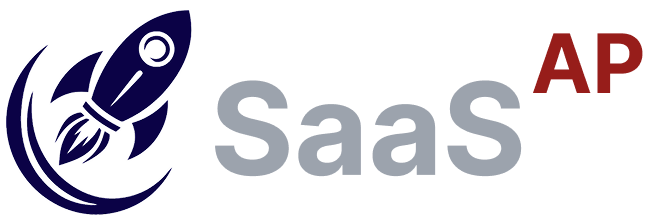Affiliate marketing is a powerful growth strategy for SaaS companies, but its success hinges on one critical element – the landing page. Without a well-optimized landing page, even the best affiliate program can struggle to convert visitors into paying customers. In this guide, we’ll walk you through the key steps to optimize your SaaS affiliate landing pages to drive more conversions, boost affiliate earnings, and maximize your return on investment.
1. Understand the Purpose of SaaS Affiliate Landing Pages
Before diving into optimization, it’s crucial to grasp the unique role of SaaS affiliate landing pages. These pages are distinct from standard product pages as they are specifically crafted to capture high-intent traffic generated by affiliate partners. The primary objective is to convert this traffic into valuable actions, such as free trials, demo requests, or direct purchases, depending on the structure of your sales funnel.
Key Characteristics of High-Performing SaaS Affiliate Landing Pages:
- Targeted Messaging: The messaging on these pages should closely align with the content, tone, and intent of the affiliate’s site, ensuring a seamless user journey. This alignment builds immediate relevance, increasing the likelihood of conversion.
- Clear Call-to-Action (CTA): High-performing affiliate landing pages prioritize a single, compelling action, like signing up for a free trial, booking a demo, or making a purchase. The CTA should be prominently displayed, concise, and action-oriented, guiding visitors toward the desired next step.
- Trust Elements: To reduce friction and build credibility, include trust-boosting elements like customer testimonials, success stories, third-party endorsements, security badges, and clear privacy policies. These components reassure potential customers and reinforce the value of your offering.
- Fast Load Times: Speed is critical. Pages should load quickly to prevent drop-offs and improve the overall user experience. Slow load times can significantly reduce conversion rates, making performance optimization a top priority.
- Mobile Optimization: With a significant portion of affiliate traffic coming from mobile devices, your landing pages should be fully responsive. This means adapting layouts, fonts, and CTAs for smaller screens without sacrificing usability or impact.
2. Craft Compelling Headlines and Subheadings
Your headline is the first impression visitors get when they land on your SaaS affiliate page, making it one of the most critical elements for driving engagement. A well-crafted headline not only captures attention but also sets the tone for the entire page, aligning directly with the promise made by the affiliate that referred the traffic. If the headline fails to resonate, visitors are likely to bounce, regardless of how optimized the rest of the page is.
Tips for Crafting Effective Headlines:
- Highlight the Core Benefit: Focus on the primary problem your SaaS solution solves. Instead of just stating features, emphasize the value and outcomes users can expect. For instance, “Automate Your Workflow and Boost Productivity” is more impactful than “All-in-One Workflow Software.”
- Use Power Words: Incorporate high-impact words that evoke emotion and action, such as “Boost,” “Optimize,” “Increase,” “Transform,” or “Unlock.” These words tap into the user’s desire for improvement and success.
- Include the Exact Keyword: For both SEO and user intent, ensure your headline includes the exact keyword, like “SaaS Affiliate Landing Pages.” This reinforces the page’s relevance and increases the likelihood of capturing qualified traffic.
3. Optimize for Speed and Performance
Page speed is a critical factor for both user experience and SEO, making it a cornerstone of effective SaaS affiliate landing pages. Slow-loading pages frustrate users, lead to higher bounce rates, and can significantly impact conversion rates. Given that many affiliate-driven visitors arrive with high intent, even a slight delay can mean the difference between a conversion and a lost opportunity.
Key Speed Optimization Tactics:
- Compress Images and Videos: Use modern, efficient formats like WebP and AV1 for images and videos. These formats offer high quality at reduced file sizes, significantly cutting down page load times. Implement lazy loading to defer off-screen content until it’s needed.
- Minimize HTTP Requests: Every image, script, and style sheet adds to the number of HTTP requests required to load the page. Reduce this by combining files, removing unnecessary elements, and optimizing your code. Tools like WP Rocket and Asset CleanUp can help streamline this process.
- Leverage Browser Caching: Store frequently used resources, like logos and CSS files, locally in the user’s browser. This reduces the need for repeated downloads, speeding up return visits and improving overall performance.
- Use a Content Delivery Network (CDN): CDNs like Cloudflare or Amazon CloudFront distribute your content globally, reducing latency by serving files from the server closest to the visitor. This not only speeds up load times but also improves site reliability and security.
4. Use High-Impact Visuals and Media
Visual elements play a crucial role in capturing attention, conveying complex information quickly, and building trust on your SaaS affiliate landing pages. High-quality images, explainer videos, and infographics can effectively highlight the benefits of your software, making your page more engaging and persuasive.
Best Practices for Visual Content:
- Relevant and High-Quality: Use visuals that directly support your product’s value proposition. For example, screenshots of your software’s dashboard, animated product demos, or customer success stories can help prospects visualize the impact of your solution. Avoid generic stock photos that add little context.
- Fast Loading: Optimize all media for quick load times without compromising quality. Use formats like WebP for images and compressed MP4 or WebM for videos. Implement lazy loading for below-the-fold content to improve initial page speed.
- Consistent Branding: Ensure that all visuals reflect your brand’s color palette, typography, and style. Consistency in design not only strengthens brand recognition but also creates a cohesive and professional experience for visitors.
5. Include Social Proof and Trust Elements
Building trust is essential for converting visitors on your SaaS affiliate landing pages. Prospects are more likely to take action when they see that others have successfully used your software and had positive experiences. Social proof not only adds credibility but also reduces perceived risk, making it a powerful conversion driver.
Examples of Trust Elements:
- Customer Logos: Showcase well-known brands or companies that use your software. This instantly builds credibility by association and reassures visitors that your solution is trusted by reputable organizations.
- User Testimonials: Share authentic, relatable feedback from satisfied customers. Use short, impactful quotes or video testimonials that highlight specific benefits and outcomes. Including the customer’s name, photo, and company adds an extra layer of authenticity.
- Ratings and Reviews: If available, display third-party ratings from platforms like G2, Capterra, or Trustpilot. These unbiased reviews can be a powerful form of social proof, providing visitors with confidence in your product’s performance and reliability.
6. Use Clear and Persuasive Calls-to-Action
A strong call-to-action (CTA) is the backbone of any high-converting SaaS affiliate landing page. It’s the critical touchpoint that guides visitors from interest to action, making it one of the most impactful elements on the page. A well-crafted CTA should be clear, concise, and directly aligned with the visitor’s intent, reducing friction and encouraging immediate action.
CTA Optimization Tips:
- Make It Specific: Generic phrases like “Submit” or “Click Here” are less effective than action-oriented, benefit-driven CTAs. Use phrases like “Start Your Free Trial,” “Get Started Now,” or “See It in Action” to create a sense of urgency and clarity around the next step.
- Use Contrasting Colors: Your CTA button should stand out from the rest of the page. Use a bold, contrasting color that aligns with your brand but still catches the eye, ensuring it doesn’t blend into the background. Consider A/B testing different color combinations to find the most effective option.
- Place CTAs Strategically: Don’t limit yourself to a single CTA. Place multiple, contextually relevant buttons throughout the page, especially after key sections like testimonials, feature highlights, and pricing information. This approach captures visitors at different stages of the decision-making process.
7. Leverage A/B Testing for Continuous Improvement
Optimization is an ongoing process, and A/B testing is one of the most effective ways to refine your SaaS affiliate landing pages over time. By systematically testing different elements, you can identify what resonates best with your audience, improving conversion rates and maximizing affiliate payouts. This data-driven approach ensures your landing pages remain high-performing, even as user behavior and market trends evolve.
Key Elements to Test:
- Headlines and Subheadings: Test variations of your main headline and supporting subheadings. Try different messaging styles, benefit-focused language, and power words to see which combination drives the most engagement.
- CTA Button Colors and Text: Small changes in CTA button color, size, and copy can significantly impact click-through rates. Experiment with contrasting colors, personalized text (e.g., “Start My Free Trial” vs. “Get Started Now”), and placement to find the winning combination.
- Form Length and Design: Shorter forms typically have higher conversion rates, but longer forms can help pre-qualify leads. Test different form lengths, field placements, and designs to balance lead quality and quantity.
- Social Proof Placement: Where you place testimonials, customer logos, and ratings can influence their impact. Test different placements to find the most effective spots, such as near CTAs or immediately after key benefit sections.
8. Track and Analyze Performance
To truly optimize your SaaS affiliate landing pages, you need to continuously monitor their performance. Analytics tools like Google Analytics, Hotjar, or HubSpot provide deep insights into visitor behavior, allowing you to identify strengths, uncover weaknesses, and make data-driven improvements. Regular analysis can reveal which elements are driving conversions and which may be causing friction, helping you maximize affiliate revenue over time.
Critical Metrics to Monitor:
- Traffic Sources: Understand where your affiliate traffic is coming from, including specific affiliate partners, referral sites, or ad campaigns. This helps you identify high-performing affiliates and optimize your partnerships accordingly. Use UTM parameters to track individual affiliate contributions accurately.
- User Behavior: Analyze how visitors interact with your landing page. Heatmaps, scroll maps, and session recordings can reveal which sections capture attention and where users drop off, providing valuable clues for optimization.
- Conversion Rates: Measure the percentage of visitors who complete the desired action, whether it’s signing up for a free trial, booking a demo, or making a purchase. Segment this data by traffic source, device type, and user demographics to gain deeper insights.
Conclusion
Optimizing your SaaS affiliate landing pages is a critical part of maximizing your affiliate program’s success. By focusing on speed, visual appeal, compelling CTAs, and ongoing testing, you can significantly boost conversions and drive higher affiliate earnings. Start implementing these best practices today to supercharge your SaaS growth.
Ready to take your affiliate program to the next level? Make these changes today and watch your conversions soar.
FAQs on SaaS affiliate landing pages
SaaS affiliate landing pages are specialized web pages designed to convert traffic from affiliate referrals into paying customers by providing targeted messaging, clear CTAs, and trust elements.
Page speed is crucial because slow-loading pages can increase bounce rates, reduce conversions, and negatively impact search engine rankings.
Use clear, benefit-focused headlines that include your main keyword, like “SaaS Affiliate Landing Pages,” to capture visitor attention and improve SEO.
High-quality visuals, including images and videos, improve user engagement, reduce bounce rates, and enhance the overall user experience.
Adding testimonials, case studies, customer logos, and third-party reviews builds trust, reduces buyer hesitation, and encourages conversions.
Use clear, action-oriented CTAs like “Start Your Free Trial” with contrasting colors, and place them strategically throughout the page.
Regular A/B testing is essential to continually optimize headlines, CTAs, form lengths, and social proof placement for better conversion rates.

